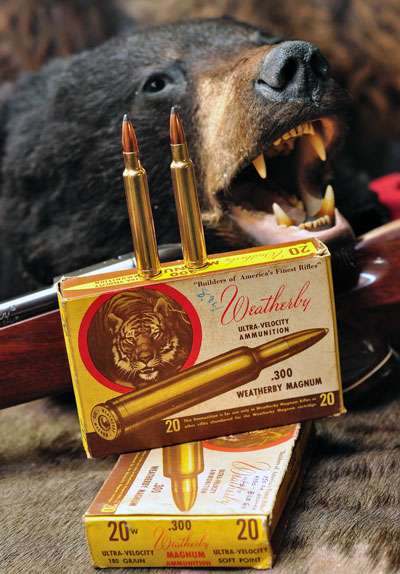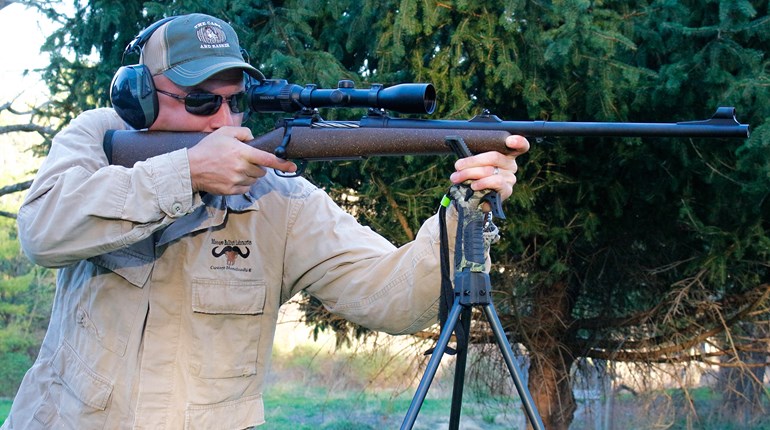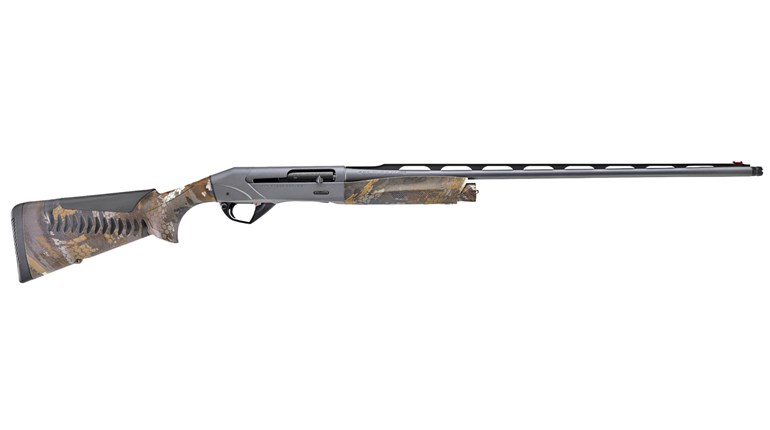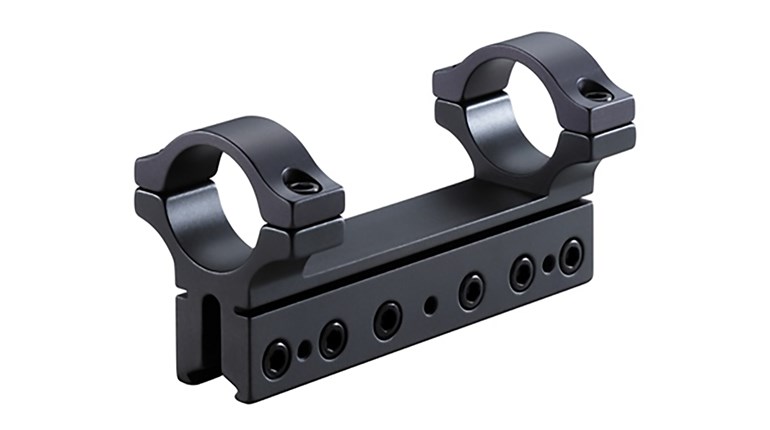
It was the last week of November, with the New York rifle season well underway in the Southern Zone of New York, and I was still sitting on watch as the time approached 11:00 am. The text message caused the phone to buzz, vibrate, shimmy, shiver or whatever phones do these days, notifying me that I had an unread message from my buddy Gordon Pieruzzi. Never a man to mince words, El Gordo’s text said simply “eight point down, Weatherby did it again.”
Despite being 15 years my senior, and sharing a haircut so similar that I've nicknamed him “Dad”, Gordon has been a longtime fan of the .300 Weatherby Magnum, as he hunts a farm with some wide-open hay lots, offering shots out to 350 yards and a bit more. And though I’ve explained to him that there are many cartridge choices that could handle those shots, he likes Mr. Weatherby’s .300, and reaches for it year after year; I handload his ammunition for him. “Just a shade over 285 yards, he never took another step,” Gordon reported, “that Nosler Ballistic Tip crumpled him.”

Mr. Pieruzzi is not alone in his devotion to the .300 Weatherby Magnum; in fact there are quite a few of his contemporaries around town who would use nothing else. What is it about the .300 Weatherby—the most popular of the lot—that has maintained such a following despite the numerous modern offerings? It’s more than just nostalgia.
Released in 1945, at the culmination of the Second World War, the .300 Weatherby Magnum followed the shorter .257 Weatherby Magnum, .270 Weatherby Magnum and 7mm Weatherby Magnum; though the .300 would be the first one of magnum length. All were based on the belted .300 Holland & Holland Magnum—itself having a 2.85-inch case and requiring a magnum-length receiver—with the body taper blown out and equipped with the signature Weatherby double-radius shoulder. At the time, speed was all the rage, especially since the .30-06 Springfield was the benchmark of .30-caliber velocity, and when one referred to a “.300 Magnum”, they were invariably referring to the H&H cartridge. Mind you, at this point in time, the .308 Winchester was seven years away, the .300 Winchester Magnum was 18 years away, and the aforementioned .300 H&H was but two decades old.
Driving a 180-grain bullet to 3,150 fps, the .300 Weatherby assuredly represents speed. The 2.85-inch case and 3.600-inch overall length gives all sorts of room for a hefty powder charge, and the .532-inch diameter case head is the same as the H&H family, so it can take advantage of the common bolt-face diameters of the Winchester belted magnums and others. The .300 Weatherby Magnum has a 300 fps advantage over the 300 H&H, and almost 200 fps over the .300 Winchester Magnum. In fact, you’d have to go to the .300 Remington Ultra Magnum or Weatherby’s own enormous .30-378 Magnum in order to better those velocity numbers. In comparison to the recoil generated by the latter two cartridges, the .300 Weatherby Magnum isn’t a terrible balance of speed and recoil.

Pushing a 180-grain bullet at that speed offers a very useable trajectory curve, and looking at Hornady’s CX bullet in their Outfitter ammunition line—leaving the muzzle at 3,100 fps—you’ll see that all-copper bullet striking 6.1-inches low at 300 yards and 17.8-inches low at 400 yards when zeroed at 200 yards. That load generates over 3,800 ft.-lbs. of energy at the muzzle, and still has over 2,100 ft.-lbs. at 400 yards; striking energy was always one of the hallmarks of Weatherby’s cartridges, and the 300 Weatherby certainly delivers the goods. Considering the dated of release—the world was primed for the end of war, the return of the men and women who fought it, and the resumption of travel and global hunting—the .300 Weatherby Magnum would come to represent the pinnacle of .30-caliber performance. In fact, it would remain the fastest commercial cartridge of that caliber for over a half-century. If you were of age to remember the space race, the advent of jet planes, and the American infatuation with speed—read the entire muscle car genre—the .300 Weatherby certainly fit right in to the culture.

I also feel that the .300 Weatherby Magnum has the look of speed; where the 300 WSM can certainly come so close in field performance that game animals might not take notice of the difference, the WSM doesn’t look as ‘speedy’ as the double-venturi shouldered Weatherby. Sometimes the way a cartridge looks has a huge impact on sales and following; simply review the arguments regarding the .30-06 Springfield and .308 Winchester—the .308 Winchester also lacks the look of speed and reach.
So, considering the fact that the .300 Weatherby needs a magnum-length receiver and comes with all the case stretching issues associated with a belted case, the sheer numbers are what have kept the .300 Weatherby alive. It does make a great cartridge for the bigger game species in North America, and will handle any and all plains game species in Africa, as well as the big cats, if .30-caliber is legal for them. Factory ammunition tends to use bullets on the heavier side of the spectrum, usually starting at 165-grain slugs and running up to the 200-grain choices, with the 180-grain projectiles being far-and-away the most popular.
Weatherby’s own ammunition dominates the choices of factory ammo, and they give a very nice selection of bullets. From the Swift Scirocco II, Barnes TTSX, Hornady InterLock, to the Nosler AccuBond and Nosler Ballistic Tip, Weatherby loads a bullet for nearly all jobs in their factory ammo line. Hornady offers the aforementioned CX monometal and the ELD-X softpoint; Barnes VOR-TX line features the 180-grain TTSX and Nosler offers loaded ammo featuring the Partition, E-Tip and AccuBond. The issue is that it seems, of late, the Weatherby ammunition is the only brand regularly available. The silver lining to that cloud is that the Weatherby stuff is really good.
Handloading the .300 Weatherby is not a difficult proposition, though I would advise trying to minimize the amount you move the shoulder during the resizing process, in order to give the best chamber concentricity possible. The case headspaces off the belt, but if you can get that radiused shoulder to match the chamber, you’ll see an improvement in accuracy. Look to the Redding Instant Comparator and the Competition Shellholders to help solve that issue. Slow-burning powders are also the way to go; I usually reach for Hodgdon’s H4831SC, IMR 7828, or Alliant’s Reloder 25 or 26, sparking it with a large rifle magnum primer like the Federal Gold Medal Match 215 primer.
America’s love affair with .30-caliber cartridges continues to rage, despite the advancements of the 6.5mms, modern .270s, and the 7mms. Among the many developments of Roy Weatherby—and there are many, ranging from the 224 Weatherby Magnum to the behemoth 460 Weatherby Magnum—the .300 Weatherby still reigns supreme. If the smooth curves of the Weatherby shoulder appeal to you, you’d have to work hard to find one of Roy’s designs that is more universal or functional, and I feel that his 300 will be present as long as there are cartridges with the Weatherby headstamp.



































